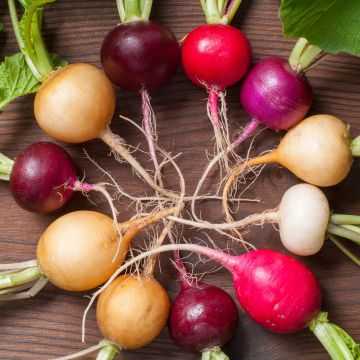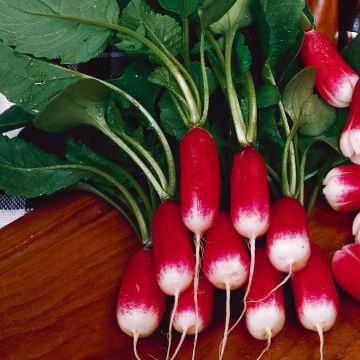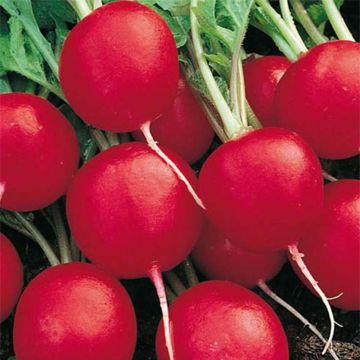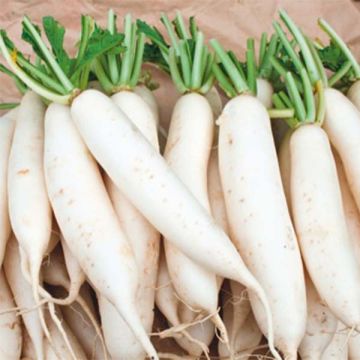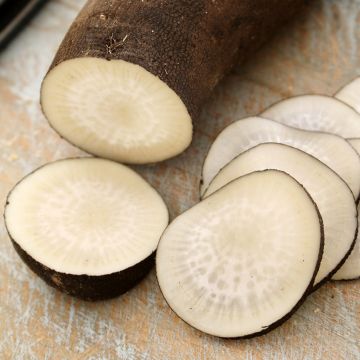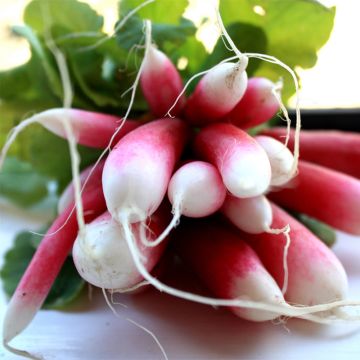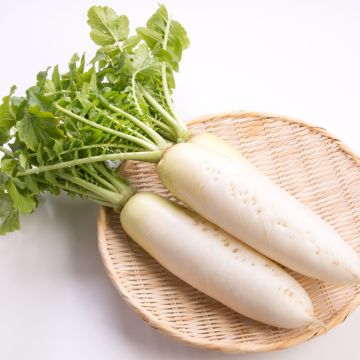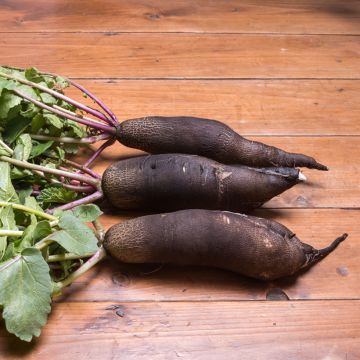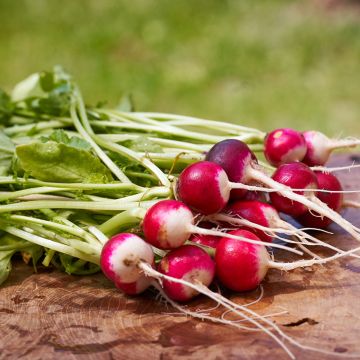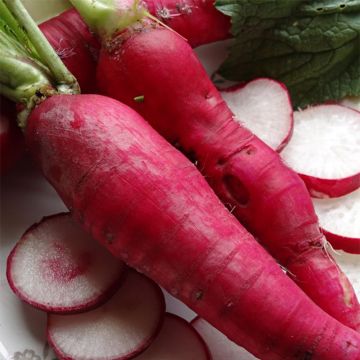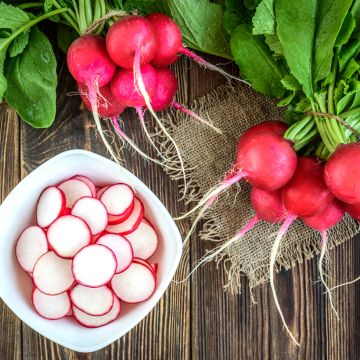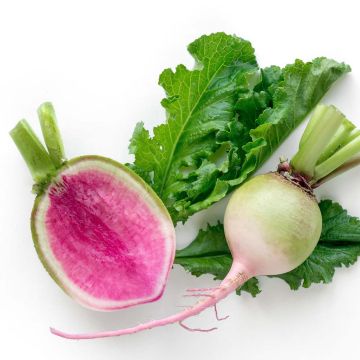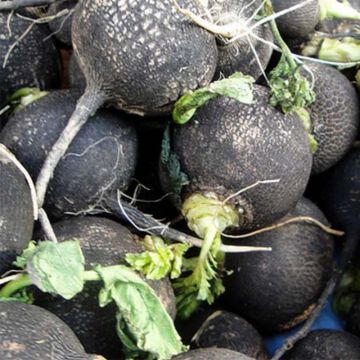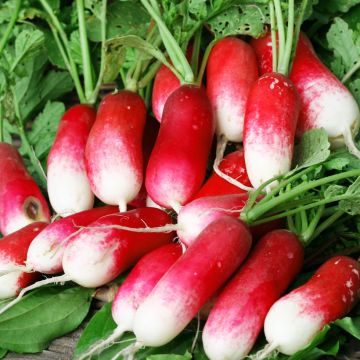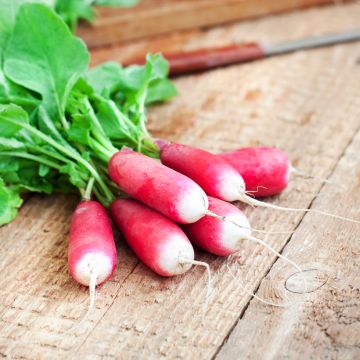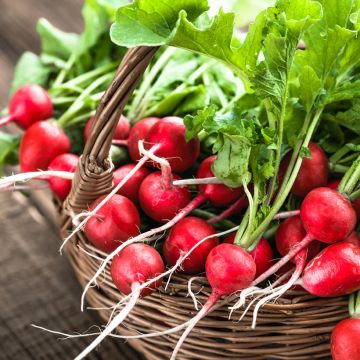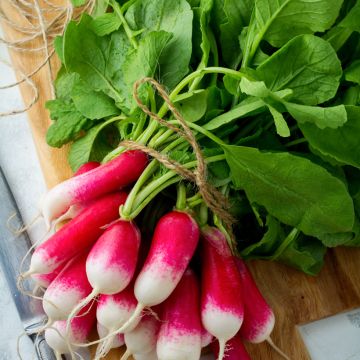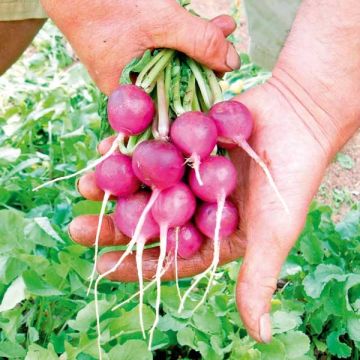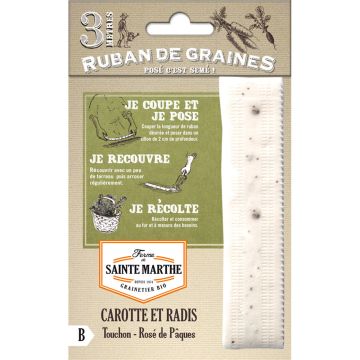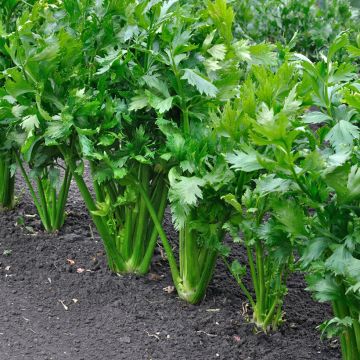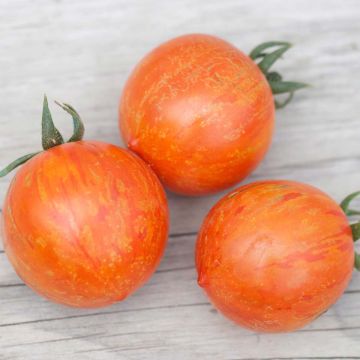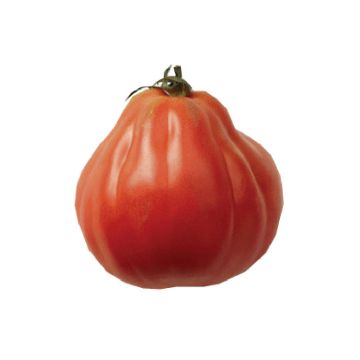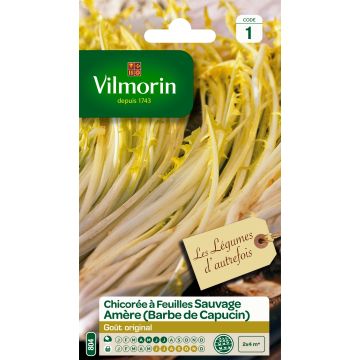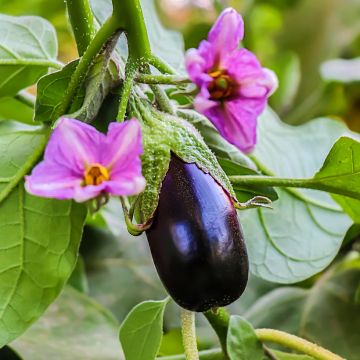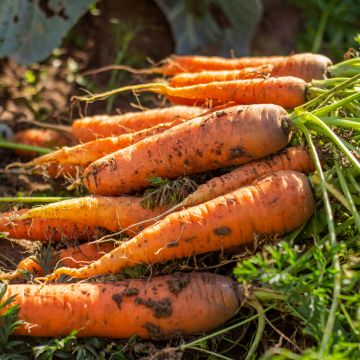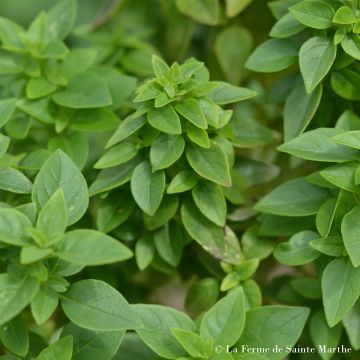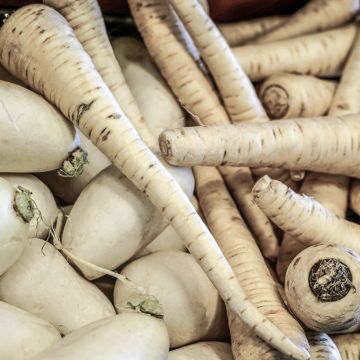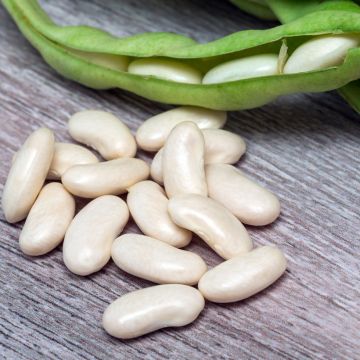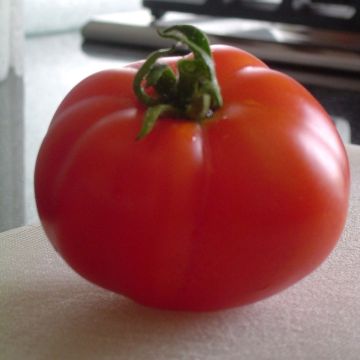Shipping country and language
Your country of residence may be:
Your country of residence is:
For a better user experience on our website, you can select:
Your shipping country:
Andorra
Austria
Belgium
Bulgaria
Canada
Chile
Croatia
Cyprus
Czechia
Denmark
Estonia
Finland
France
Germany
Greece
Hungary
Iceland
Ireland
Italy
Latvia
Lithuania
Luxembourg
Malta
Monaco
Netherlands
Poland
Portugal
Romania
Slovakia
Slovenia
Spain
Sweden
Switzerland
United Kingdom
We only deliver seed and bulb products to your country. If you add other products to your basket, they cannot be shipped.
Language:
French
German
Spanish
English
My Account
Hello
My wish lists
Plantfit
Log in / Register
Existing customer?
New customer?
Create an account to track your orders, access our customer service and, if you wish, make the most of our upcoming offers.
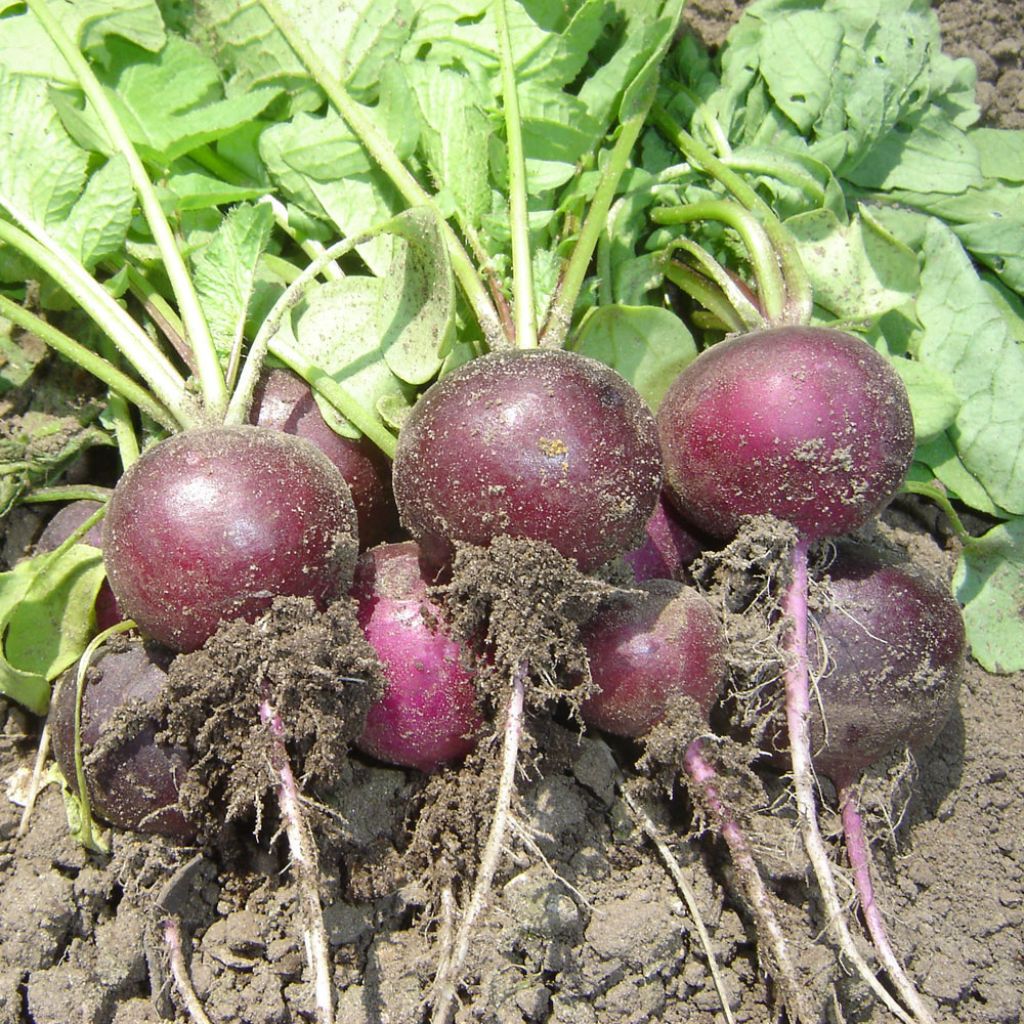

Radis Bacchus F1 - Raphanus sativus
Bacchus F1 Radish
Raphanus sativus Bacchus F1
Radish, Garden Radish
Unsown radishes.
Geneviève B., 19/05/2017
Why not try an alternative variety in stock?
View all →Order in the next for dispatch today!
Dispatch by letter from €3.90.
Delivery charge from €5.90 Oversize package delivery charge from €6.90.
More information
This item is not available in your country.
Schedule delivery date,
and select date in basket
This plant carries a 6 months recovery warranty
More information
We guarantee the quality of our plants for a full growing cycle, and will replace at our expense any plant that fails to recover under normal climatic and planting conditions.
Seed-only orders are dispatched by sealed envelope. The delivery charge for seed-only orders is €3.90.
Description
The Bacchus F1 radish is a variety of round radishes, very uniform. It belongs to the type of radishes for all months. Its skin is dark purple, its flesh is white and crunchy. The taste is pronounced but never spicy. Ripeness is reached very quickly, only 25 days from sowing to harvest. Sowing can start in February and March, under shelter, and continue from April to September in open ground. Harvests can then be done from March to October.
The radish is a fairly hardy annual or biennial vegetable plant. It belongs to the Brassicaceae family and the root is mainly consumed raw, as well as the freshly picked leaves which enhance soups. There are radishes of different colours, red being the most common, but also pink, white or gray. They are generally classified into 2 main types: radishes for all months which are represented by varieties with small roots, and radishes for winter which are represented by varieties with long roots.
Japanese radishes or daikon are also found, which have a long white and conical root, sometimes marketed as turnips. Winter radishes have a large taproot with black, pink or violet skin. Its flesh is white. Its leaves are green and divided, forming a compact tuft at the base of the plant. Its taste is much stronger than that of radishes for all months. With a pungent flavor, it can be enjoyed cooked, like turnips, or raw, like carrots. Winter radishes have many virtues: they contain vitamin C and sulfur, as well as phosphorus and magnesium. They are antiscorbutic and diuretic and are recommended for people with liver and gallbladder problems.
Harvest and storage:
Harvesting of radishes for all months and summer radishes takes place 4 to 6 weeks after sowing. Regular harvests as soon as the radishes are formed, without letting them grow too big, help to limit the risk of them becoming hollow, spicy or indigestible. Radishes for all months or summer radishes should be consumed quickly. The freshly harvested leaves can be cooked into a delicious soup.
Harvesting of winter radishes takes place 4 to 5 months after sowing. Harvest by gently lifting with a garden fork and let them dry on the ground before bringing them in. If they stay in the ground for winter, cover the soil with straw.
The gardener's tip:
Sow radishes and carrots in the same row and at the same time, which naturally separates the carrot seeds. Once the radishes are harvested, there will be space for the carrots to grow. Accompanied by mint, radishes will be less prone to attacks from flea beetles, insects that feed on the leaves, creating small irregular holes.
To have crunchy radishes throughout the season, it is good to spread out the sowings every 2 to 3 weeks, in your garden or in a planter.
Harvest
Plant habit
Foliage
Botanical data
Raphanus
sativus
Bacchus F1
Brassicaceae
Radish, Garden Radish
Cultivar or hybrid
Annual
Other Radish seeds
Planting and care
Sowing
Sowing radishes every month is one of the easiest to do. The ribbons are placed directly in the ground, in loosened soil in rows. Barely cover the ribbons with 2 cm (1in) of compost or fine soil. Gently press down with the back of a rake and water with a fine spray. Keep sufficiently moist until germination. Radish ribbons can be sown all year round, with a preference for late winter to early summer, avoiding periods of extreme heat, and then in late summer to early autumn, when the soil is still warm, before the first frosts.
Force-sowing radishes can be done in place as early as February, but protection such as a frame or tunnel should be provided until the end of frost. Sowings are preferably done broadcast for these early radishes.
Summer radish sowing can be done as early as May. You can sow as you please until the end of summer, or even at the beginning of autumn if the climate allows, in open ground, in rows spaced 10 to 20 cm (4 to 8in) apart.
Winter radish sowing takes place from June to November, depending on the climate, in open ground, in rows spaced 20 to 30 cm (8 to 12in) apart.
Radishes like clear and sunny locations and appreciate light shade in the heart of summer.
Maintenance
Once the sowing has germinated, thinning is necessary. This operation consists of removing the weakest plants, leaving only the strongest ones, every 4 to 5 cm (2in) for monthly radishes, and 10 to 15 cm (4 to 6in) for turnip radishes.
The soil should be kept relatively moist through regular but light watering. Hoeing, weeding, and mulching, combined with watering, will help limit the production of pungent radishes. Furthermore, the preserved moisture will prevent flea beetle invasions, which thrive in hot and dry weather.
Seedlings
Care
Intended location
- , onOrder confirmed
Reply from on Promesse de fleurs
Vegetable seeds
Haven't found what you were looking for?
Hardiness is the lowest winter temperature a plant can endure without suffering serious damage or even dying. However, hardiness is affected by location (a sheltered area, such as a patio), protection (winter cover) and soil type (hardiness is improved by well-drained soil).

Photo Sharing Terms & Conditions
In order to encourage gardeners to interact and share their experiences, Promesse de fleurs offers various media enabling content to be uploaded onto its Site - in particular via the ‘Photo sharing’ module.
The User agrees to refrain from:
- Posting any content that is illegal, prejudicial, insulting, racist, inciteful to hatred, revisionist, contrary to public decency, that infringes on privacy or on the privacy rights of third parties, in particular the publicity rights of persons and goods, intellectual property rights, or the right to privacy.
- Submitting content on behalf of a third party;
- Impersonate the identity of a third party and/or publish any personal information about a third party;
In general, the User undertakes to refrain from any unethical behaviour.
All Content (in particular text, comments, files, images, photos, videos, creative works, etc.), which may be subject to property or intellectual property rights, image or other private rights, shall remain the property of the User, subject to the limited rights granted by the terms of the licence granted by Promesse de fleurs as stated below. Users are at liberty to publish or not to publish such Content on the Site, notably via the ‘Photo Sharing’ facility, and accept that this Content shall be made public and freely accessible, notably on the Internet.
Users further acknowledge, undertake to have ,and guarantee that they hold all necessary rights and permissions to publish such material on the Site, in particular with regard to the legislation in force pertaining to any privacy, property, intellectual property, image, or contractual rights, or rights of any other nature. By publishing such Content on the Site, Users acknowledge accepting full liability as publishers of the Content within the meaning of the law, and grant Promesse de fleurs, free of charge, an inclusive, worldwide licence for the said Content for the entire duration of its publication, including all reproduction, representation, up/downloading, displaying, performing, transmission, and storage rights.
Users also grant permission for their name to be linked to the Content and accept that this link may not always be made available.
By engaging in posting material, Users consent to their Content becoming automatically accessible on the Internet, in particular on other sites and/or blogs and/or web pages of the Promesse de fleurs site, including in particular social pages and the Promesse de fleurs catalogue.
Users may secure the removal of entrusted content free of charge by issuing a simple request via our contact form.
The flowering period indicated on our website applies to countries and regions located in USDA zone 8 (France, the United Kingdom, Ireland, the Netherlands, etc.)
It will vary according to where you live:
- In zones 9 to 10 (Italy, Spain, Greece, etc.), flowering will occur about 2 to 4 weeks earlier.
- In zones 6 to 7 (Germany, Poland, Slovenia, and lower mountainous regions), flowering will be delayed by 2 to 3 weeks.
- In zone 5 (Central Europe, Scandinavia), blooming will be delayed by 3 to 5 weeks.
In temperate climates, pruning of spring-flowering shrubs (forsythia, spireas, etc.) should be done just after flowering.
Pruning of summer-flowering shrubs (Indian Lilac, Perovskia, etc.) can be done in winter or spring.
In cold regions as well as with frost-sensitive plants, avoid pruning too early when severe frosts may still occur.
The planting period indicated on our website applies to countries and regions located in USDA zone 8 (France, United Kingdom, Ireland, Netherlands).
It will vary according to where you live:
- In Mediterranean zones (Marseille, Madrid, Milan, etc.), autumn and winter are the best planting periods.
- In continental zones (Strasbourg, Munich, Vienna, etc.), delay planting by 2 to 3 weeks in spring and bring it forward by 2 to 4 weeks in autumn.
- In mountainous regions (the Alps, Pyrenees, Carpathians, etc.), it is best to plant in late spring (May-June) or late summer (August-September).
The harvesting period indicated on our website applies to countries and regions in USDA zone 8 (France, England, Ireland, the Netherlands).
In colder areas (Scandinavia, Poland, Austria...) fruit and vegetable harvests are likely to be delayed by 3-4 weeks.
In warmer areas (Italy, Spain, Greece, etc.), harvesting will probably take place earlier, depending on weather conditions.
The sowing periods indicated on our website apply to countries and regions within USDA Zone 8 (France, UK, Ireland, Netherlands).
In colder areas (Scandinavia, Poland, Austria...), delay any outdoor sowing by 3-4 weeks, or sow under glass.
In warmer climes (Italy, Spain, Greece, etc.), bring outdoor sowing forward by a few weeks.
